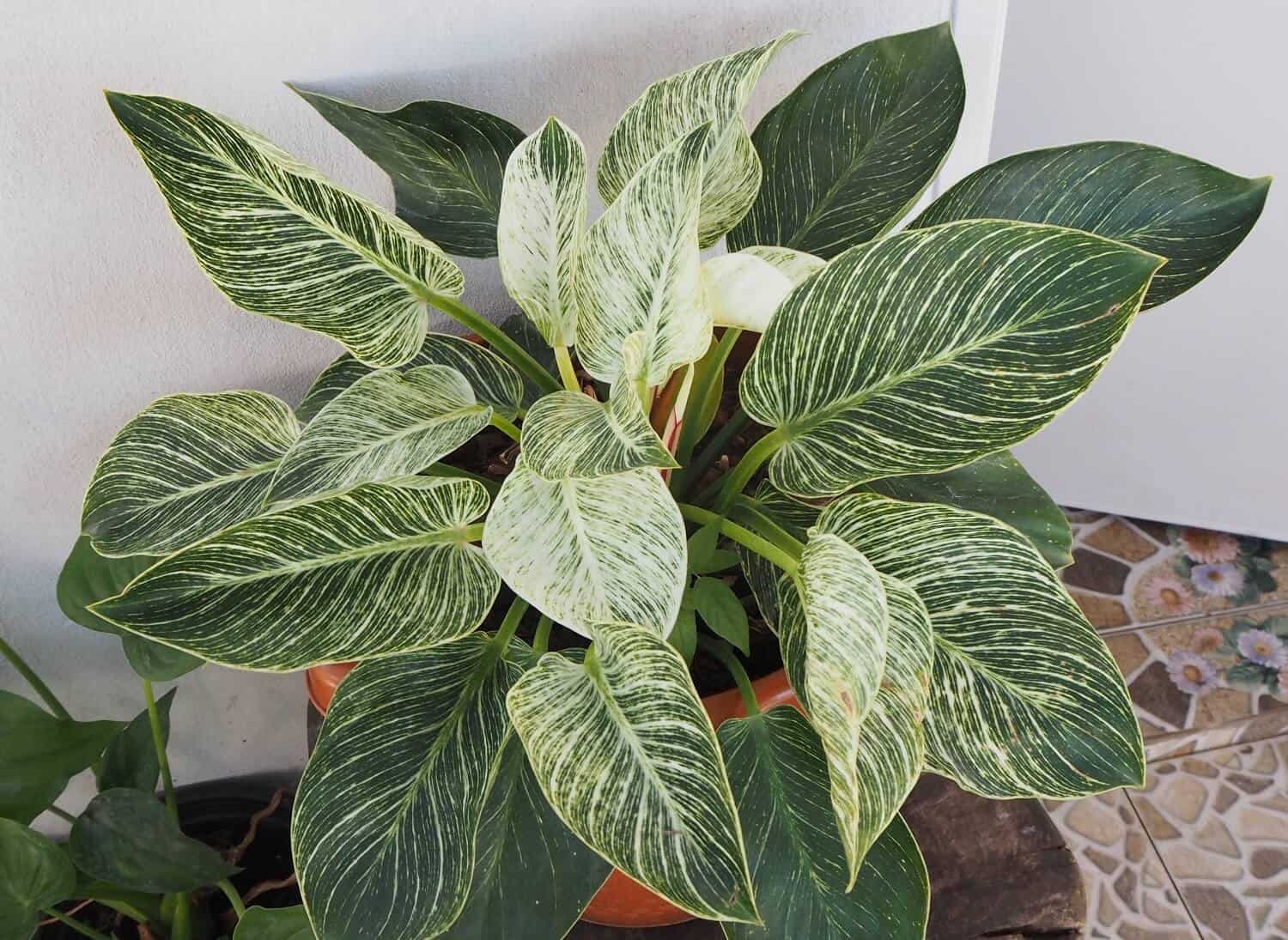What comes to your mind when you hear the term 'philodendron?' If you're like most people, you'll think of a gorgeous vining plant - the heartleaf philodendron. In which case you'll be right because the botanical name comes from the Greek: philos (loving) and dendron (tree) - which translates to a vine.
However, there are quite a number of other trendy philodendron types to choose from. Some are self-heading and don't require any support. While others are trailing and look great in hanging baskets.
In general, there are hundreds of philodendron varieties creating a conundrum of choice for most of us plant lovers.
But it doesn't have to be that way.
That's why in today's post, I'm going to share a list of suitable philodendron types that you can consider growing indoors. And if choosing a handful is still a challenge, why not go for all of them?
List of 15 Philodendron Types to Grow Indoor (With Pictures)
Heartleaf Philodendron (Philodendron hederaceum)
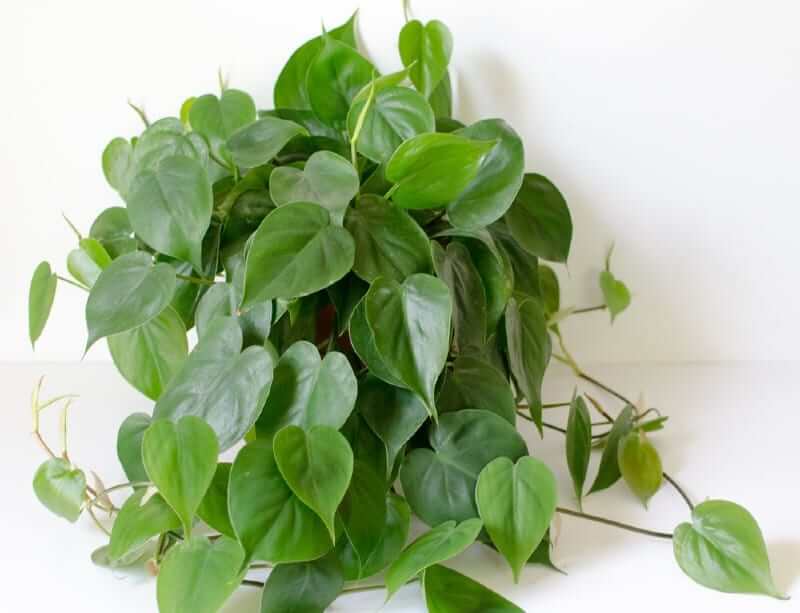
Image Source: Plantly
If you visit most homes, garden centers, or plant nurseries, you're most likely to find a heartleaf philodendron growing somewhere.
It's that popular!
And with very good reasons. For starters, they do extremely well in average household temperatures and humidity levels. But most importantly, their solid dark green leaves on twining vines make them a great choice for hanging baskets and shelf plants.
Heartleaf philodendron is often confused with pothos. These two plants have uncanny similarities that some gardeners have kept a pothos plant in their house for years thinking it is a vining philodendron and vice versa.
Pink Princess Philodendron (Philodendron Erubescens ‘Pink Princess’)
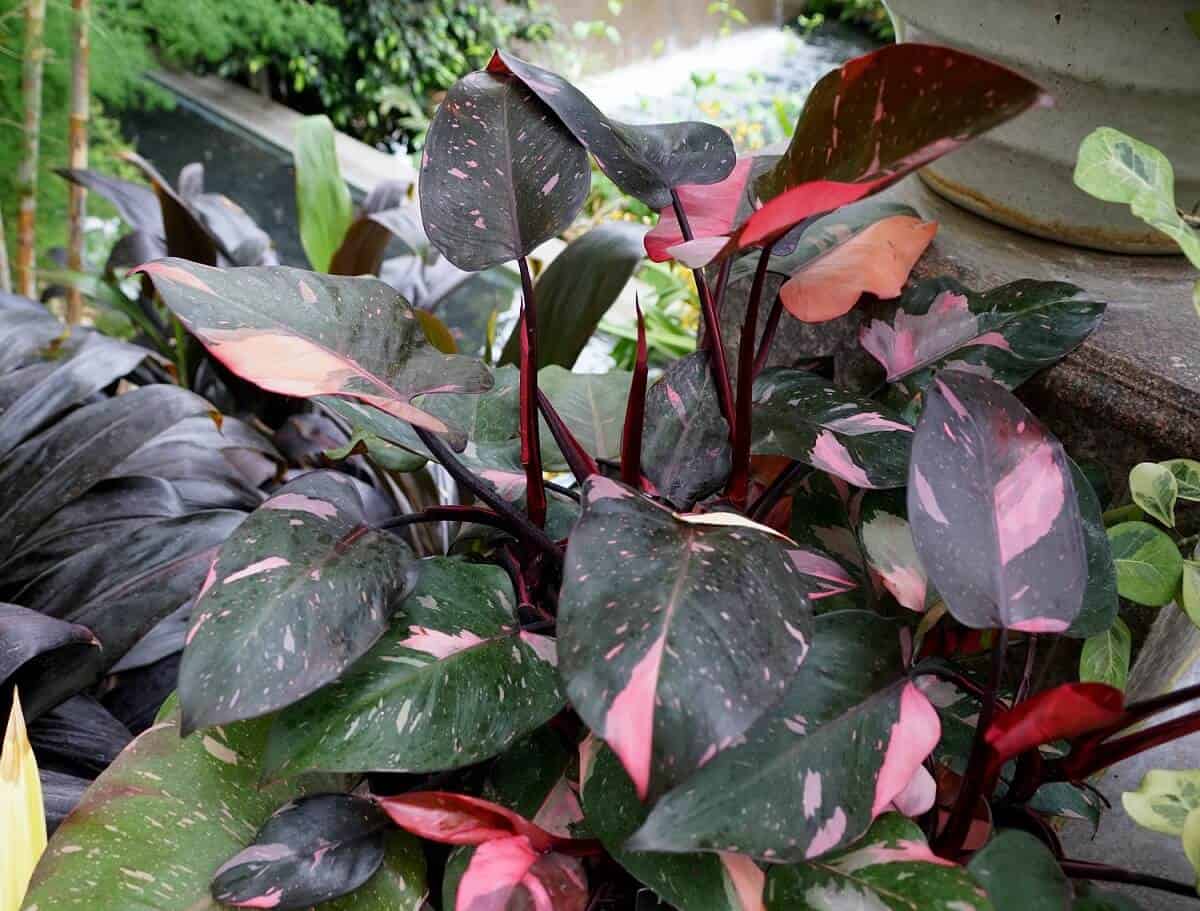
Philodendron Erubescens ‘Pink Princess’ is a tropical aroid in the Araceae family with rare dark (blackish) leaved houseplant with pink variegation. The leaves emerge dark olive and turn black with age.
Its pink coloration is variable, emerging as large splotches, small streaks, or occasionally an entire leaf. Philodendron Pink Princess rarely produces inflorescences especially when grown as a houseplant but when it does, the flower consists of a purple-red spathe surrounding a white spadix.
In the recent past, there has been a sharp rise in the demand for these plants. And with it, the rise in prices - making Pink Princess Philodendron one of the most expensive indoor plants. Besides, it’s considered a “collectors plant”.
The plant is appreciated as a novelty and has become quite a commodity among houseplant fanatics. In fact, so much so that it has attained the Award of Garden Merit by the Royal Horticultural Society.
Brasil Philodendron (Philodendron hederaceum 'Brasil')
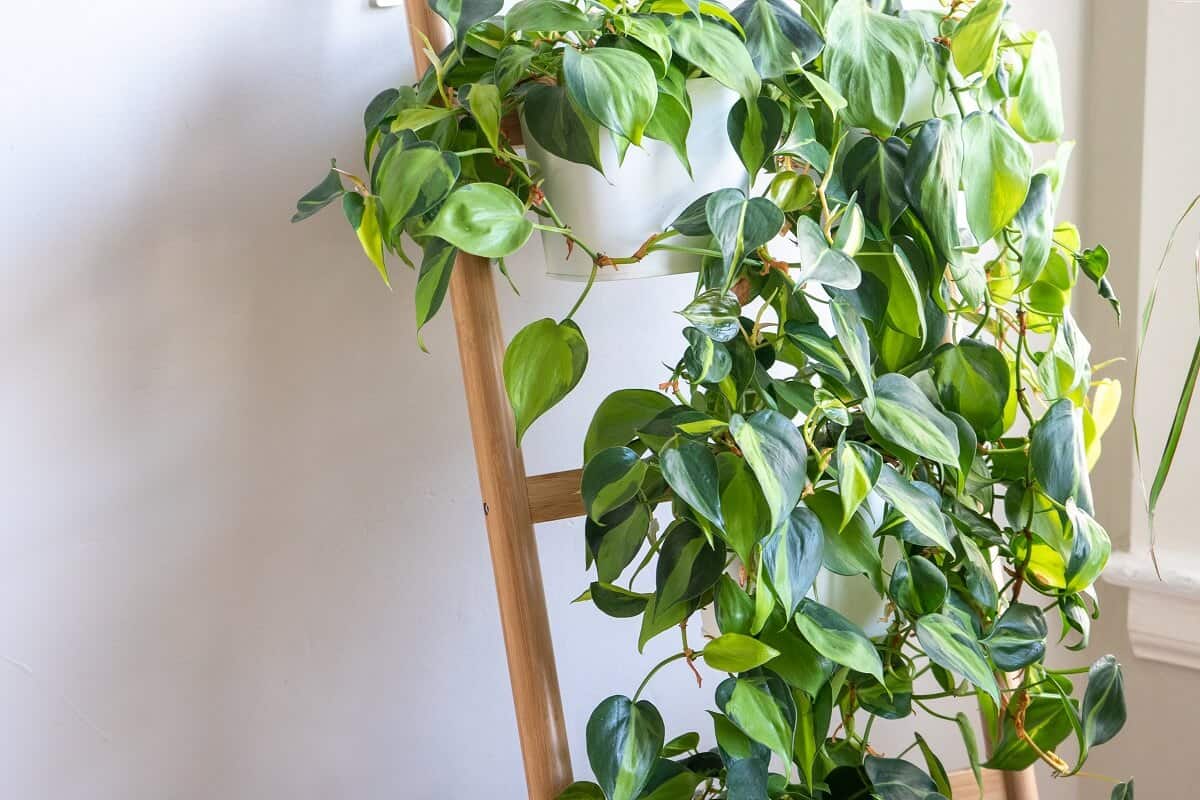
This is another popular form of the heartleaf philodendron with a band of yellow along the center of each leaf. It's a vigorous grower with bright, glossy foliage that matures to olive green with creamy yellow coloring on its edges and the middle.
Philodendron Brasil prefers indirect light and thrives in moist soil and warm temperatures. Though not as common as the heartleaf philodendron, it's gaining popularity among indoor gardeners.
When grown in ideal conditions, the plant can reach up to 3 feet in height and spread out 3 feet across.
This trailing vine looks fantastic when hung from a basket or allowed to climb up a trellis or moss pole. It's a great choice for anyone looking for an easy-to-care-for, beautiful plant that adds unique color and texture indoors.
Black Cardinal Philodendron (Philodendron erubescens ‘Black Cardinal’)
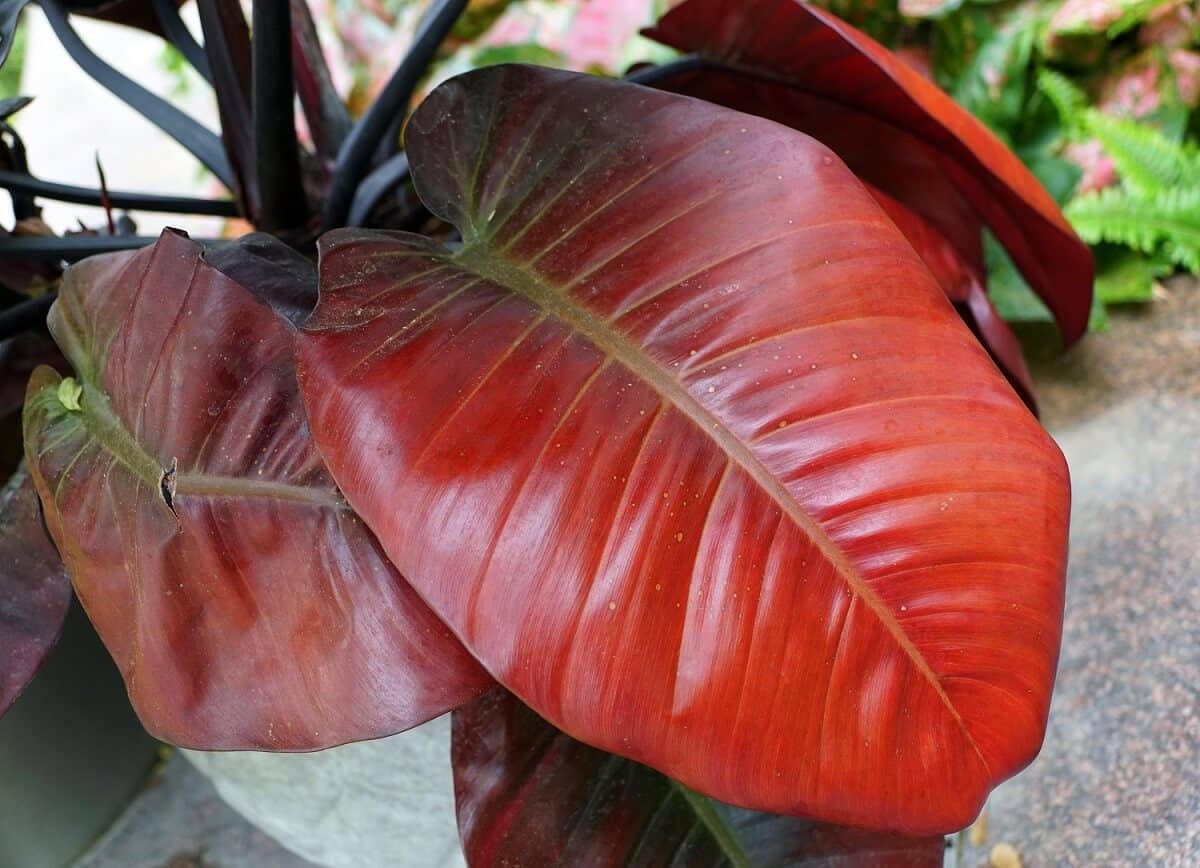
Ever heard of the black cardinal philodendron?
Until recently I had not been aware of this unusual and striking houseplant. But ever since, it has become one of my favorite plants.
Also known by its botanical name as Philodendron erubescens ‘Black Cardinal’, the plant is delightfully chocolate brown to almost burgundy foliage held on orange-bronze stems. As it matures, the leaves turn blackish or sometimes dark green.
With these rare traits, I have no doubt that this plant will become a great addition to your plant collection too.
Here's the complete guide on how to grow and care for the Black Cardinal plant.
Philodendron Hope Selloum (Philodendron bipinnatifidum 'Hope')
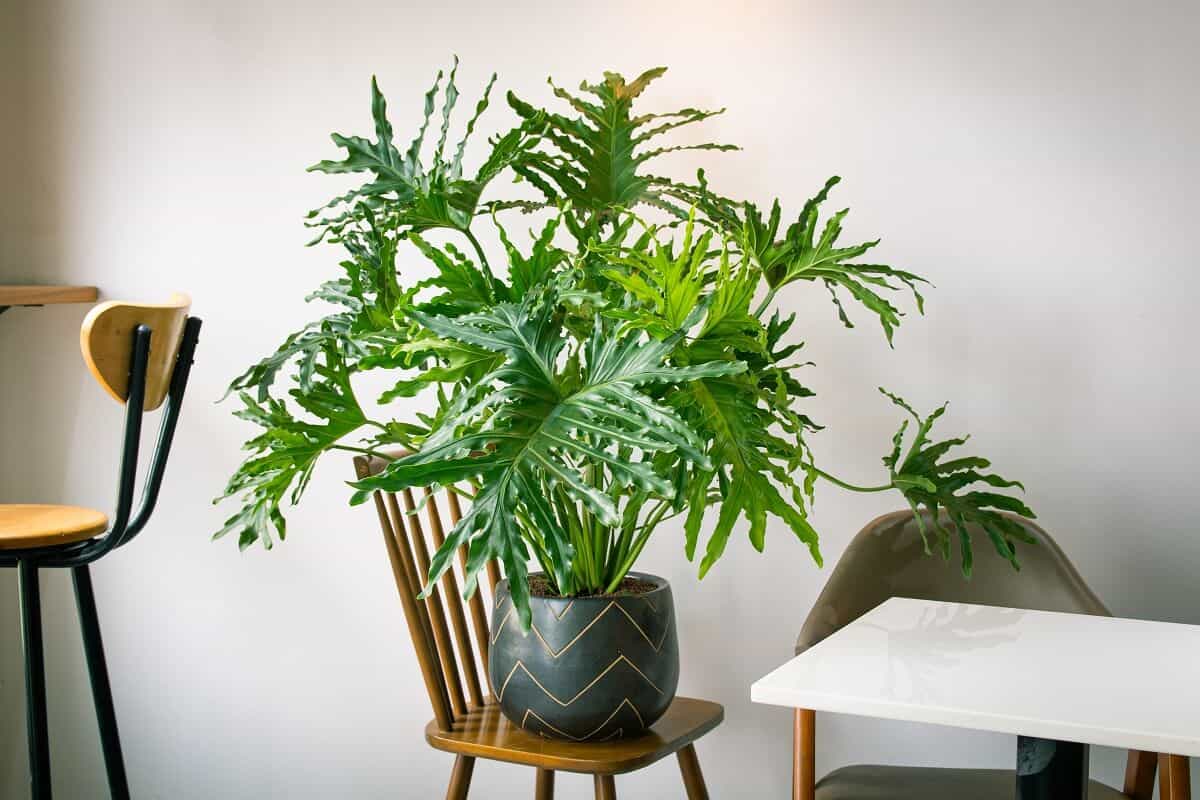
Tree philodendron (P. bipinnatifidum, formerly known as P. selloum), is a common foundation plant in zones 8b-11, where it can reach a height of 12-15 feet with an equal or greater spread. Other common names for this variety include Hope philodendron, lacy tree philodendron, and horse head philodendron.
The plant has large, deeply cut, green to dark green leaves up to 3 feet in length.
As a container plant, it has the same cultural requirements as the heartleaf philodendron and makes a dramatic statement in larger commercial and public spaces.
The specific cultivar (Hope) is a result of continued selection by tissue culture of P. bipinnatifidum.
Philodendron Prince of Orange (Philodendron erubescens 'Prince of Orange')
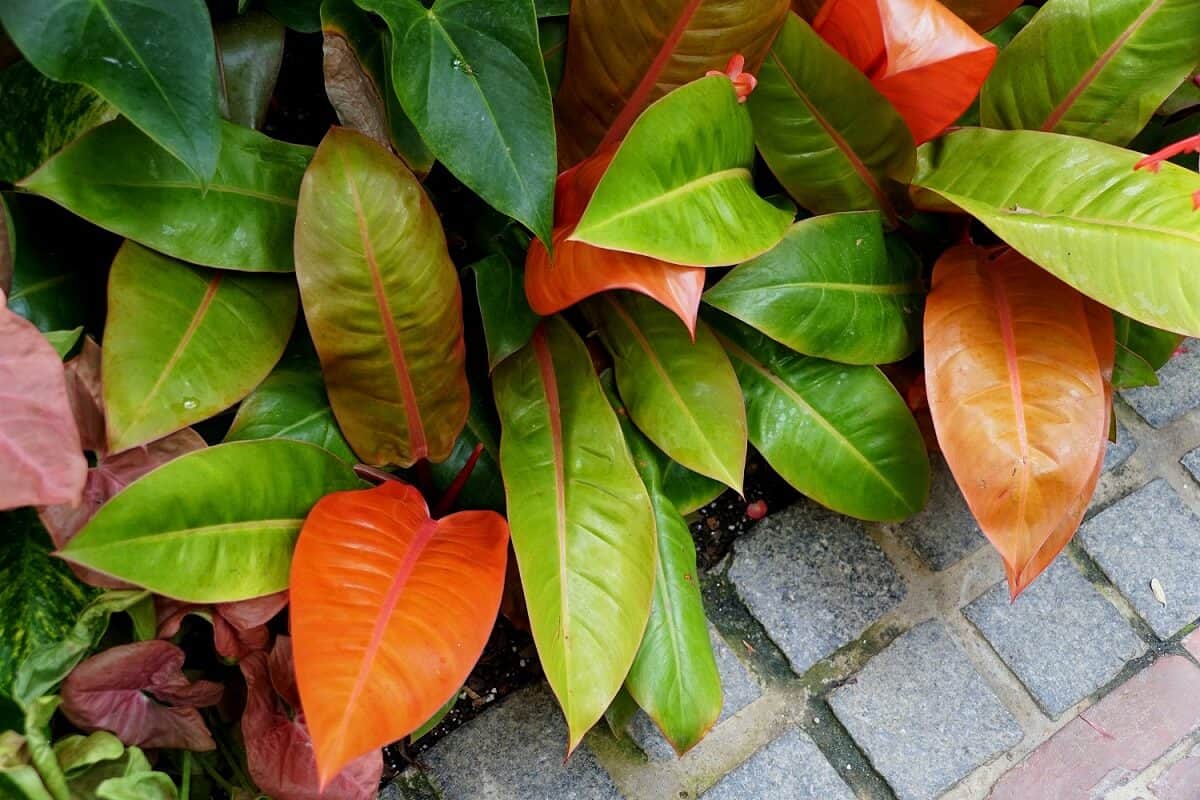
If you’re looking for a plant that can add the perception of warmth, spark conversations, and light up your otherwise dull interiors, then you should add the Prince of Orange philodendron to your houseplant collection.
The ‘Prince of Orange’ plant lives up to its royal expectation since it’s a sturdy, self-heading, and compact growing plant with bright new orange leaves that are very easy to grow and care for.
This type of philodendron is a cultivar in a group of hybrids called the Red-leaf Philodendrons (Philodendron erubescens).
Ecuador Philodendron (philodendron verrucosum)
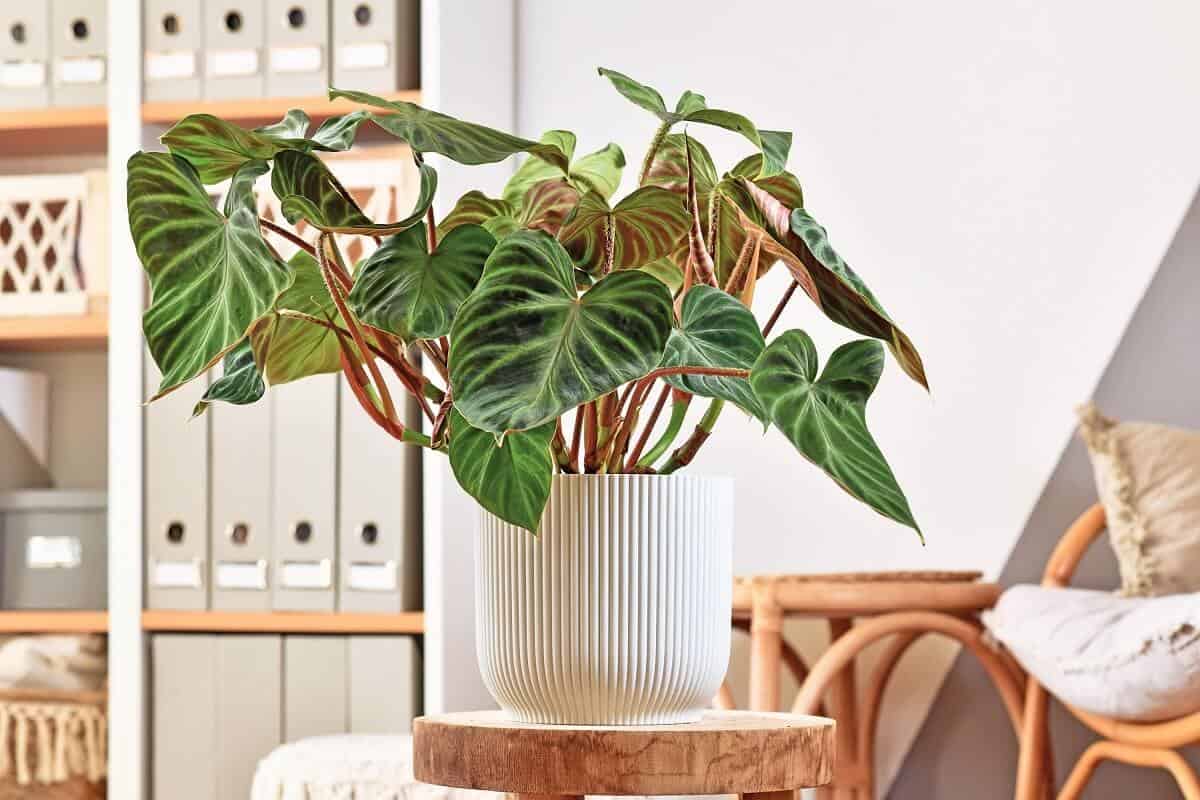
Known for its striking, heart-shaped leaves and eye-catching color, the philodendron verrucosum makes a lovely addition to any houseplant collection.
It's also known as Ecuador philodendron and has a vining growth habit. The large leaves are a deep, velvety green color, accented by light green veins and a burgundy underside.
Occasionally, this variety of philodendrons will produce white and pink blooms in the summer.
Silver Sword Philodendron (Philodendron hastatum 'Silver Sword')
The Silver Sword philodendron, also known as Philodendron hastatum, is one of the more unique-looking varieties of indoor plants. It's an incredibly elegant plant with its arrow-shaped foliage that elongates and becomes tri-lobed as the plant matures.
This cultivar derives its name from the shape of the leaves which resembles a sword and foliage coloration.
The leaves have a metallic-silverish coloration. The pale silver-green color is more pronounced in juvenile plants but fades slightly with maturity - which gives the plant a beautiful shimmering effect.
Silver sword plant is moderately easy to grow indoors with enough bright indirect light and regular watering and fertilization. It can reach up to 1.5 meters in height when fully grown.
Tree Philodendron (Philodendron bipinnatifidum)
Tree philodendron is a classic houseplant that has been around for centuries and with good reason. It's an incredibly easy plant to care for, it looks beautiful, and its large leaves can really make a statement in any room.
These large, lush-green leaves bring a tropical feel that no other plant can replicate. While it's closely related and similar to Hope Selloum, the latter is highly textured around the splits.
Also known as the split-leaf Philodendron, the tree Philodendron is a fast-growing plant that can reach up to 15 feet tall in its native environment.
In a pot indoors, it's considerably smaller and more manageable. It prefers bright indirect light but will do well in low-light conditions too. But be sure to water regularly and fertilize during the growing season.
White Princess Philodendron (Philodendron erubescens 'White Princess')
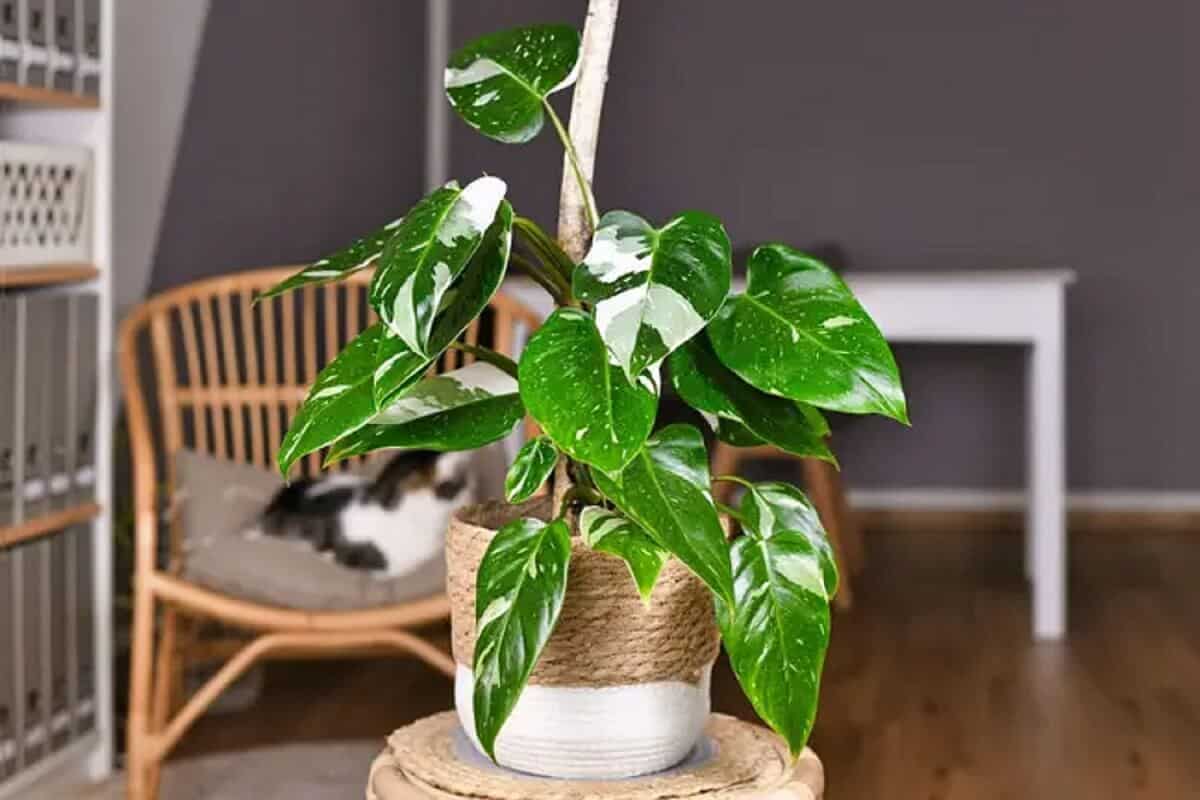
The White Princess philodendron is an incredibly unique and rare variety of the popular Red-leaf Philodendron (Philodendron erubescens) with beautiful white splotches on its leaves. This makes it an incredibly striking plant that will easily stand out in your houseplant collection.
The leaves of this plant are heart-shaped, dark green in color, and have white spots that vary from faint to bold. The stems are upright, self-heading, and the foliage is glossy.
However, it's not always readily available in most plant nurseries. Even if you find it, there are buying restrictions on how many plants you can purchase.
Therefore, if you can learn to propagate, grow, and care for your own 'White Princess' plants, you'll have an unfair advantage over other houseplant fanatics.
Here's a beginner's DIY guide to growing this wonderful plant.
Imperial Red and Imperial Green (Philodendron erubescens 'Imperial Red & Green')
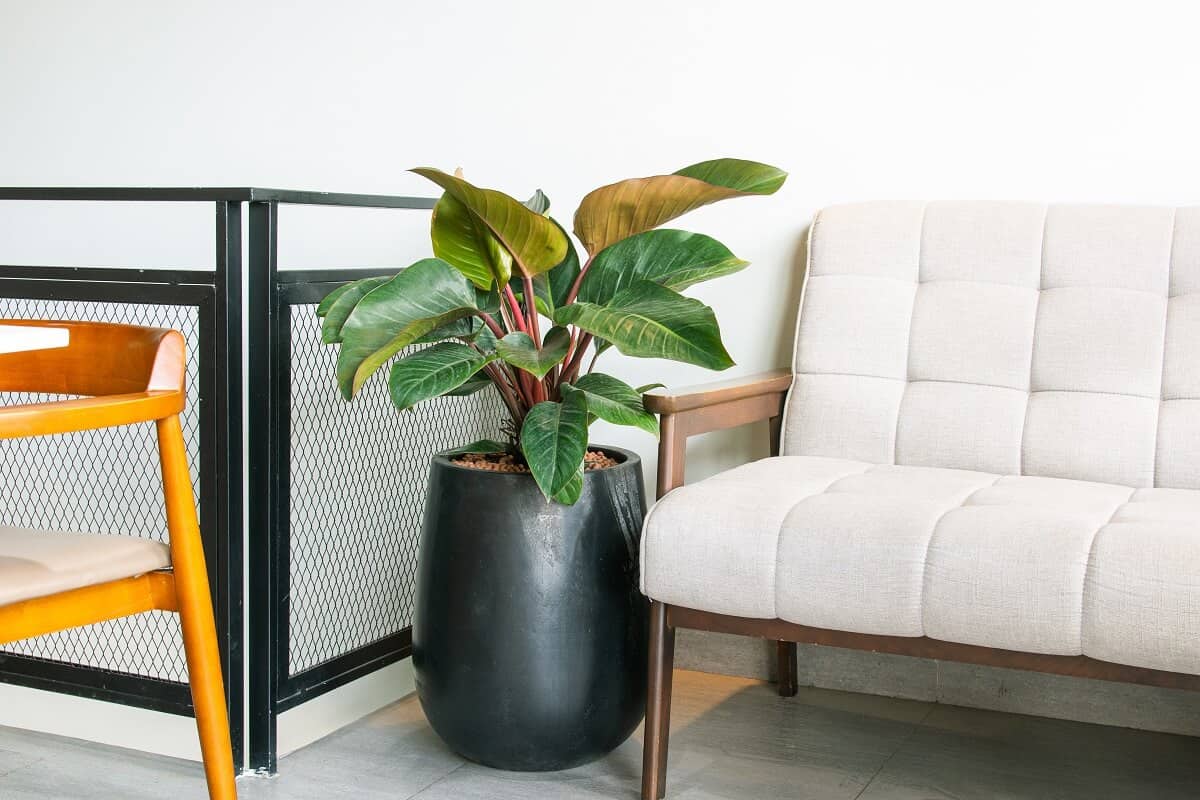
The Imperial Red and the Imperial Green are two different varieties of philodendron but they have similar characteristics. They both have attractive leaves with an interesting marbled pattern in shades of green and red.
The main difference between the two is that Imperial Red has green stems with much more burgundy extending on the leaves while Imperial Green has light green stems with some burgundy.
Besides, Philodendron Imperial Red is a self-heading variety with deep red leaves, white veins, and purple undersides. It looks particularly stunning when grown in bright light, but will tolerate lower light levels.
These plants can reach heights of up to 10 feet, making them a perfect choice for filling large corners in your home. They should be given bright, indirect light, and watered regularly but allow the soil to dry between waterings.
They prefer bright indirect light and regular watering and fertilization during the growing season. Both types of plants are ideal for beginners since they're very hardy and can easily tolerate a wide range of temperatures and light conditions.
Philodendron Xanandu (Philodendron 'Xanadu')
Another popular variety of philodendron, the Philodendron Xanandu is a self-heading hybrid plant that is great for small landscapes.
It only grows 2 to 3 feet tall with a slender stem. The narrow leaves are shallowly lobed and are only 6 to 12 inches in length. It will grow in sun or shade.
It's native to South Florida and can reach up to 2.5 feet in height when grown indoors.
Lemon Lime Philodendron (Philodendron hederaceum 'Lemon Lime')
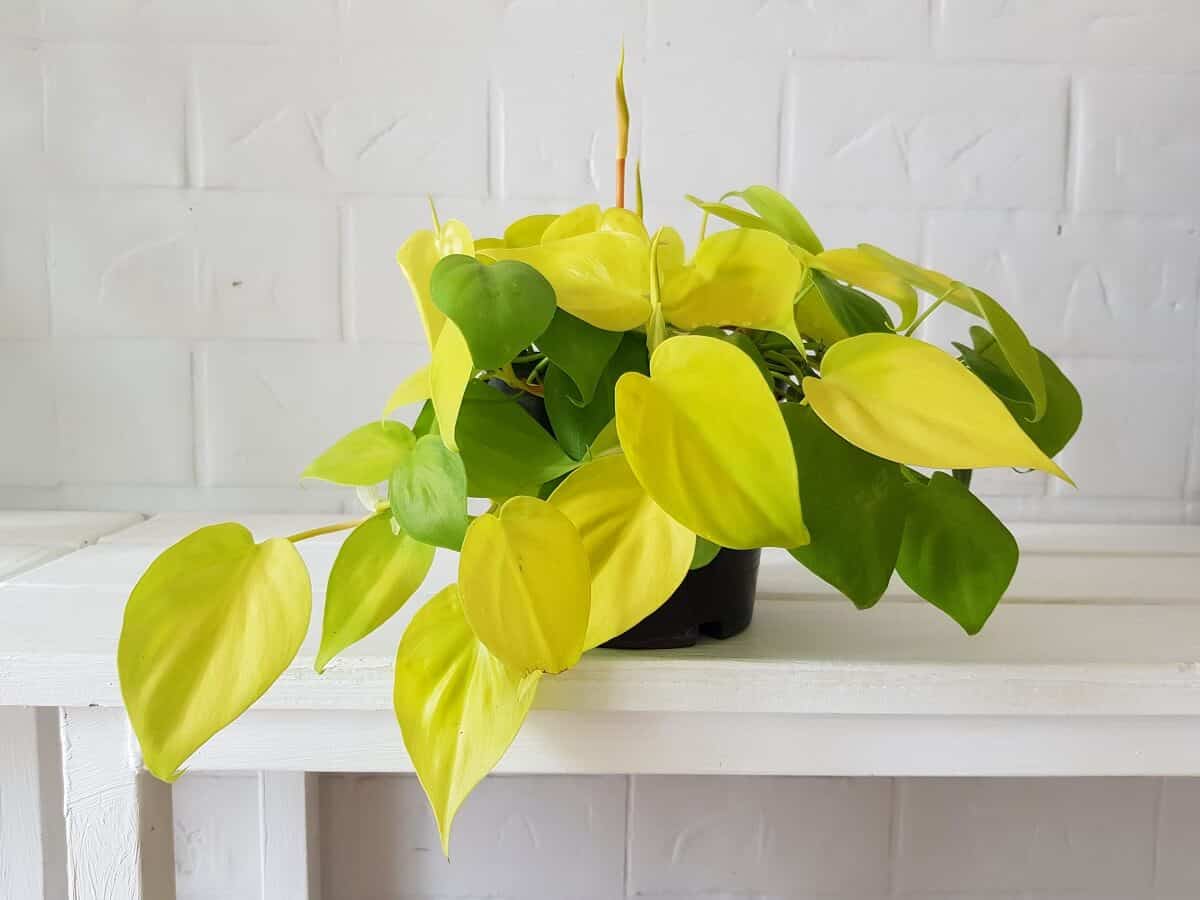
The Lemon Lime Philodendron is a popular and attractive variety of philodendron, similar to the popular neon pothos. The only difference between lemon-lime and heartleaf philodendrons is the foliage coloration.
This variety displays bright neon green and yellow foliage that is sure to brighten up any room. It also has a vining growth habit just like the heartleaf philodendron and looks great growing in hanging planters, or on a tall shelf.
If I'm being honest, this is probably one of my favorite philodendron types to grow indoors. However, if you want to maintain that gorgeous coloration, ensure the room has bright indirect light.
Philodendron Micans (Philodendron hederaceum 'Micans')
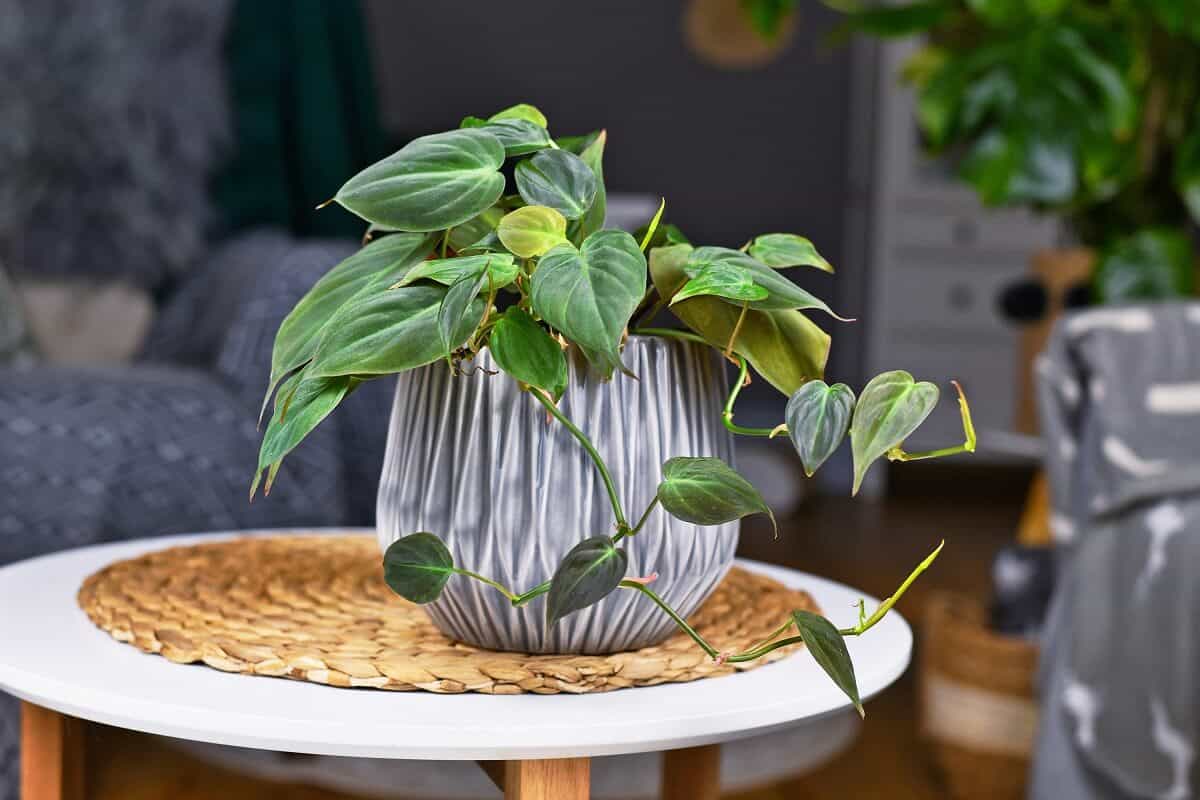
Also known as velvet philodendron, it has small, soft-velvety, dark green leaves with a tinge of red or burgundy. This is a great pick for anyone looking for something unique, as it has attractive foliage that looks stunning in any setting.
Place the plants near a bright window where they can sufficient light to achieve intense hues with large darker leaves. Also, make sure you rotate the plant once in a while for uniform light exposure.
As the plant matures, it will climb and trail searching for more light. And as such, they look stunning in hanging baskets or on top shelves where they can cascade down.
Birkin Philodendron (Philodendron birkin)
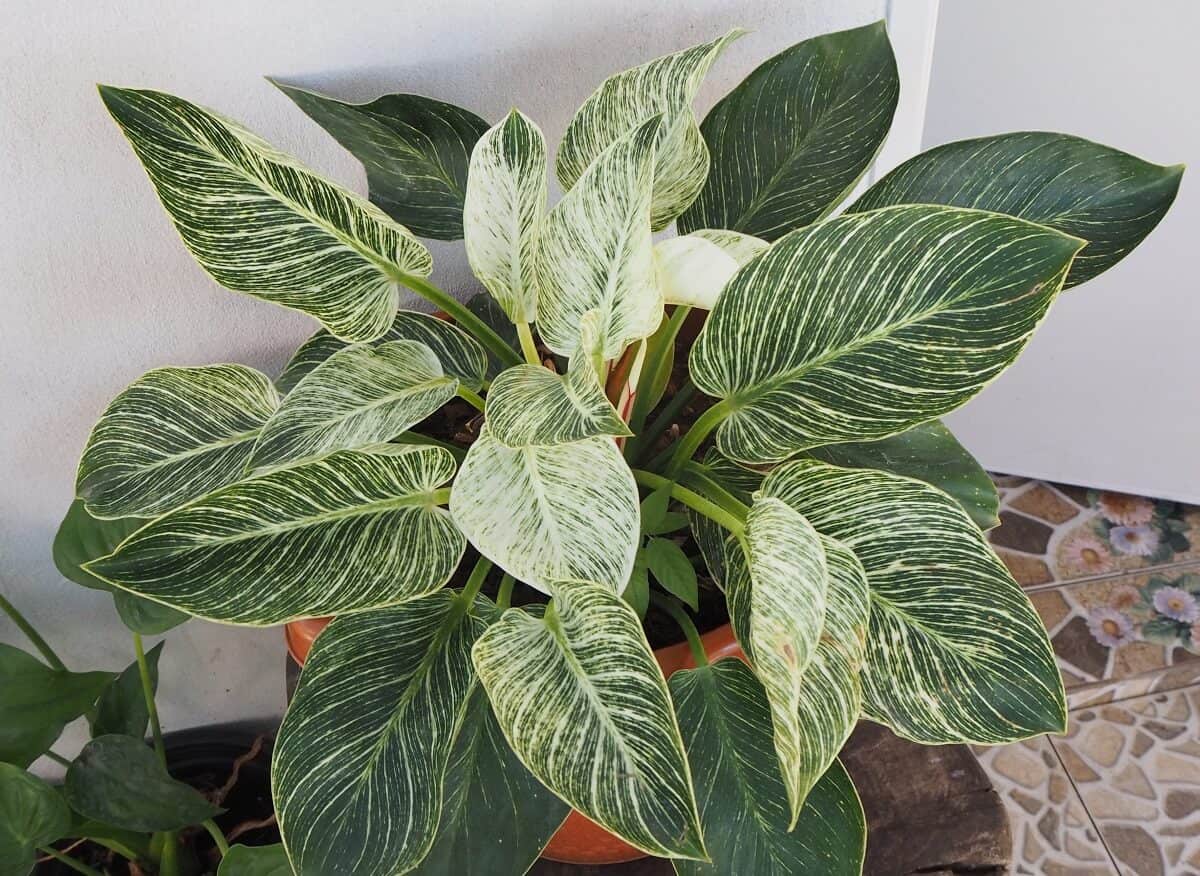
Ever heard of Philodendron Rojo? Yes, the social media sensation plant with interesting leaves that unfurl in deep shiny red. But as it matures, the leaves fade to a burgundy-green color.
Only that we're not talking about the Rojo but rather its latest hybrid - the Birkin philodendron which has become just as trendy.
Birkin Philodendrons have medium-sized deep green leaves with white pinstripes and variegation. Although they're relatively slow growers, the wait is worthwhile in the long run.
White Knight Philodendron (Philodendron erubescens 'White Knight')
This is a rare philodendron hybrid with large, dark green leaves that are bordered by bright white stripes. The foliage looks like it has been painted on and since they're slow-growing plants, each leaf will be unique with random streaks and patterns.
White Night philodendrons need bright indirect light to maintain their intense coloring. Keep them away from direct sunlight, as this may scorch the leaves and cause irreparable damage.
Conclusion
Philodendron plants are among some of the most popular houseplants that exist today.
They are easy to care for, come in a wide range of sizes and colors, and look great in any home. Whether you're looking for a striking centerpiece or an attractive trailing plant, there's bound to be a philodendron that suits your needs.
I hope you'll find several on this list of 15 trendy philodendron types to spice up your house. Make sure to provide them with bright indirect light and regular watering to keep them healthy!
